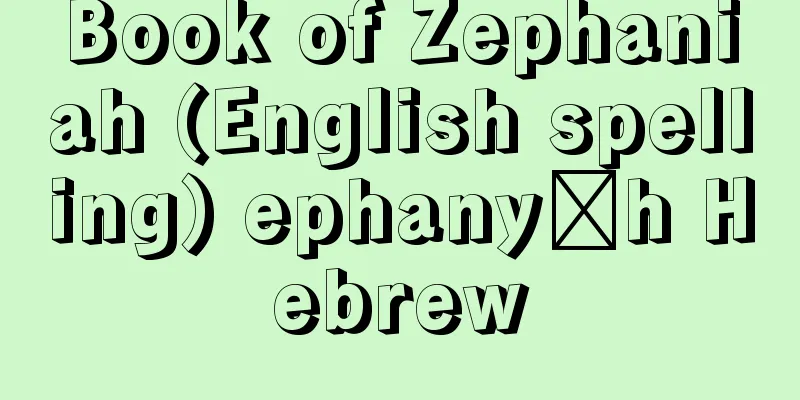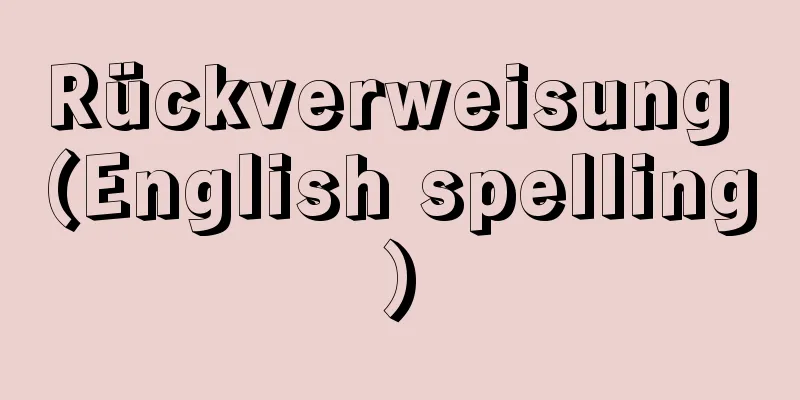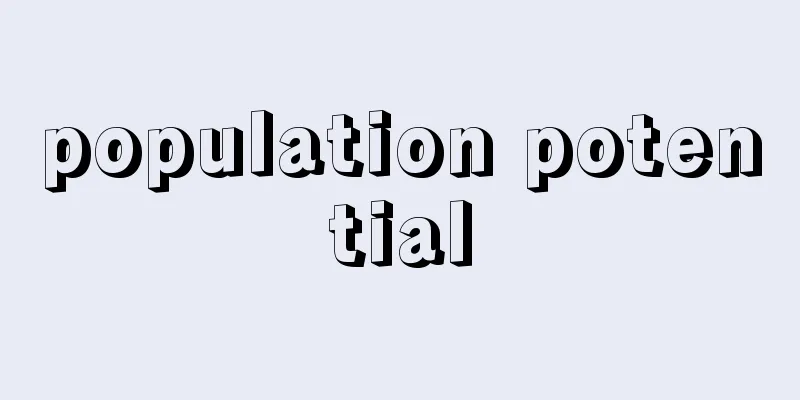Burakumin - Burakumin

|
It mainly refers to areas where people who suffered discrimination due to their low class status in the early modern period lived. Due to relocations and influxes of people due to policies in the modern era, it does not necessarily correspond to the low class residential areas of the early modern period. In 1871 (Meiji 4), the Meiji government issued the "Emancipation Edict" as part of the "One Emperor, All People" and modernization policies, so for the Burakumin, "modernization" meant liberation from discrimination, and while they were also absorbed into the "One Emperor, All People" ideology, they aimed to achieve "modernization" through education and improvements in their lives, but people outside the Burakumin tried to discriminate and exclude them in accordance with "old customs." In the 1880s, the Burakumin's economic poverty worsened, and coupled with the cholera epidemic, Burakumin began to be labeled with marks such as dirty, diseased, and different. Furthermore, the penetration of the "family" consciousness that accompanied the enactment of the Meiji Civil Code worked to exclude Burakumin, who were considered "different," from their own "bloodline" and "family." The Buraku improvement policy that was implemented nationwide after the Russo-Japanese War instilled in the general public the recognition that discriminated Buraku were a different race that could not be changed by the arbitrary will of individuals, and the term "special Buraku," used by the Ministry of Home Affairs and prefectural authorities, became established as a replacement for the previous term "new commoner." However, dissatisfaction also erupted from the discriminated Buraku community side, and the Ministry of Home Affairs and the private reconciliation organization Teikoku Kodokai shifted to a reconciliation policy. The rice riots of 1918 (Taisho 7) and the formation of the National Levelers' Association in 1922 caused society to recognize the importance of the Buraku issue anew, and in response to the Suiheisha's denunciation of discrimination, the Central Reconciliation Association was established in 1925, leading to the development of full-scale policies. Also of great significance was the social recognition of the idea of universal equality amid the current of democracy. However, this did not directly lead to the elimination of Buraku discrimination, and as the wartime regime progressed from the 1930s onwards, the Buraku issue was resolved under the pretense of "national unity," while society's discriminatory attitude remained embedded in it. After the war, the Buraku Liberation Movement was restarted under the Japanese Constitution, which proclaimed respect for fundamental human rights, and in 1965 (Showa 40), the Buraku Liberation Council's report recognized the Buraku issue as a "national responsibility." In response, Buraku Measures were implemented, and the disparities in living environment and economics between those inside and outside Buraku were largely eliminated, but new problems such as jealousy, discrimination, and "pseudo-Buraku" emerged. The Special Measures Act was also abolished in 2002, but efforts are continuing to explore how to confront the discrimination that still exists today while understanding it in its true form. [Midori Kurokawa] "Modern Buraku History: From the Meiji Era to the Present" by Midori Kurokawa and Yutaka Fujino (eds., 2009, Yushisha) " "Modern Buraku History: From the Meiji Era to the Present" by Midori Kurokawa (2001, Heibonsha) Source: Shogakukan Encyclopedia Nipponica About Encyclopedia Nipponica Information | Legend |
|
おもに近世における賤民(せんみん)的身分に起因して差別を受けている人々が居住する地域をさす。近代以後の政策による移転や流入等によって必ずしも近世の賤民居住地域と一致するわけでない。 1871年(明治4)、明治政府は「解放令」を「一君万民」と開化政策の一貫として発布したため、被差別部落の人々にとって「開化」は差別からの解放を意味し、彼らは「一君万民」思想にも取り込まれながら、教育や生活改善を通じて「開化」実現をめざすが、部落外の人々は「旧習」に則り、差別・排除を行おうとする。1880年代になると部落の経済的窮乏が進行し、コレラの流行などとも相まって、被差別部落に対して不潔・病気・異種といった徴表が付与されていく。さらに明治民法制定にともなう「家」意識の浸透は、「異種」と見なされる被差別部落の人々を自らの「血筋」や「家」から排除する方向に作用した。 日露戦後に全国的に展開された部落改善政策は、被差別部落を個人の恣意(しい)では変わりえない人種を異にした存在であるとする認識を民衆レベルに浸透させ、内務省や府県当局が使用した「特殊(種)部落」という呼称が、それまでの「新平民」に替わって定着する。しかし被差別部落側からの不満も噴出し、内務省や民間融和団体帝国公道会は融和政策に転じていく。 1918年(大正7)の米騒動と1922年の全国水平社結成は社会に部落問題の重要性を再認識させ、水平社による差別問題の告発を受けて1925年中央融和事業協会が設立されて本格的な政策が展開される。またデモクラシーの潮流のなかで普遍的平等思想が社会的に認知されたことも大きな意味をもった。しかしそれは部落差別解消には直結せず、1930年代以後戦時体制が進行するなかで、社会の側の差別意識を内包したまま、部落問題は「国民一体」というたてまえのなかに解消されていった。 戦後は、基本的人権の尊重を謳った日本国憲法のもとで部落解放運動が再開され、1965年(昭和40)の同和対策審議会答申は、部落問題を「国の責務」として認めるに至る。それを受けて同和対策事業が実施され、部落内外の住環境や経済面の格差はかなり解消したが、ねたみ差別意識や「エセ同和」など新たな問題も生じた。また、2002年には特別措置法も廃止されたが、今なお存在する差別を等身大にとらえつつ、いかにそれに向き合うかという模索が続けられている。 [黒川みどり] 『黒川みどり・藤野豊編著『近現代部落史』(2009・有志舎)』▽『黒川みどり著『近代部落史――明治から現代まで』(2001・平凡社)』 出典 小学館 日本大百科全書(ニッポニカ)日本大百科全書(ニッポニカ)について 情報 | 凡例 |
Recommend
Appreciation group - Kanshodan-tai
...A membership-based organization that allows re...
Geese
A general term for birds such as the Anser and Bra...
aniseed
…the seeds are called aniseeds, and it is an annu...
Neo [village] - Neo
A village in Motosu County, western Gifu Prefectur...
Camagüey (English spelling)
A city in central-eastern Cuba. It is located abou...
Red Cross Society (English: Red Cross Society)
This is the Chinese equivalent of the Japanese Red...
Robert Marion La Follette
1855‐1925 A progressive politician who represented...
individual family
… [Junichiro Itani] [The human family] The smalle...
Oniasari - Ribbed little neck
A bivalve mollusca of the family Veneridae in the...
Kasai Irrigation Canal
This is an agricultural waterway that flows from ...
Hashimiya (English spelling)
…But politically and economically, pre-Islamic Ba...
Mēness (English spelling)
…Latvian youths sing and dance through the night ...
Asymptotic formula - recurrence formula
For a function f ( x ) defined in domain D and a b...
Guillaume Carl
…The peasants attacked the manor house, killed th...
Front side - Omotekata
A theater term. These people work on the front si...







![Hudson [River] - Hudson](/upload/images/67cc89c1eae4f.webp)

